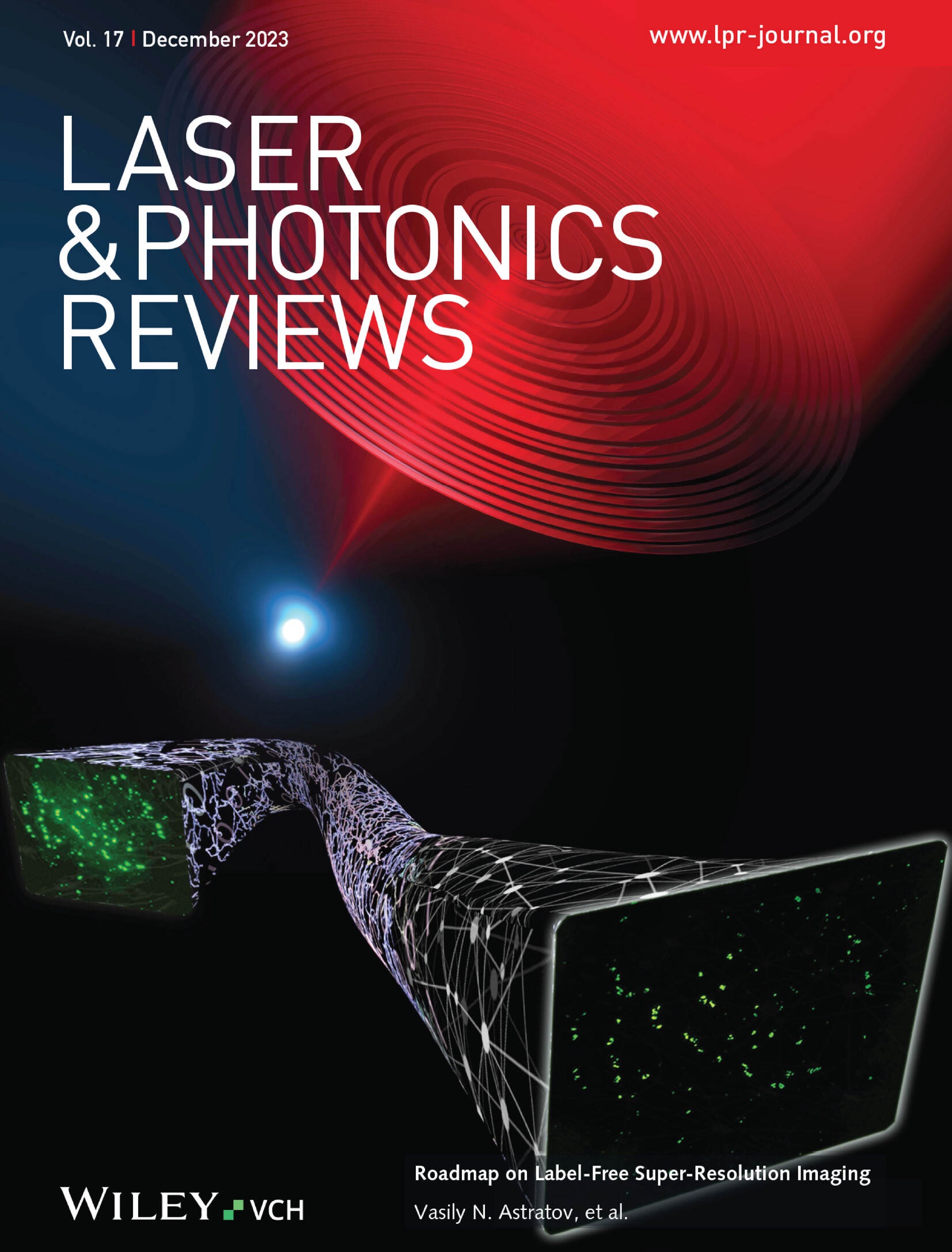Nonvolatile Continuously Tunable Integrated Optical Router
IF 9.8
1区 物理与天体物理
Q1 OPTICS
引用次数: 0
Abstract
Reconfigurable optical routers integrated into waveguides are vital for on‐chip all‐optical connectivity, promising revolutionary flexibility and efficiency for classical and quantum optical information processing. Conventional reconfiguration methods (thermo‐optic, free carrier dispersion, Pockels effect) often suffer from bulky sizes or high static power consumption, limiting scalability. We demonstrate, for the first time, a nonvolatile continuously tunable integrated optical router on a CMOS‐backend silicon‐on‐insulator (SOI) platform. This router employs Mach‐Zehnder optical switches with antimony sulfide (Sb₂S₃) phase shifters. Utilizing the Sb₂S₃ cell's nonvolatile phase change via a doped silicon microheater enables continuous forward switching and over 7 bits (128 levels) of reverse switching with zero static power. The nearly pure phase tuning capability of 0.3 dB/π achieves a high extinction ratio exceeding 18 dB. The phase shifter exhibits an insertion loss below 0.6 dB and endured over 1500 switching cycles using electrical pulses of varying voltage/duration for Joule heating. Additionally, the phase shifter supports MHz‐speed volatile switching via the thermo‐optic effect. This continuously tunable method provides superior precision over traditional non‐volatile multilevel techniques and effectively mitigates accumulated transmission errors in large‐scale Optical Network‐on‐Chip (ONoC) systems, removing a major obstacle to practical optical communication and computing implementation.非易失性连续可调集成光路由器
集成到波导中的可重构光路由器对于片上全光连接至关重要,为经典和量子光信息处理提供了革命性的灵活性和效率。传统的重构方法(热光学、自由载流子色散、波克尔斯效应)通常体积庞大或静态功耗高,限制了可扩展性。我们首次在CMOS后端硅绝缘体(SOI)平台上展示了一种非易失性连续可调谐集成光路由器。该路由器采用带有硫化锑(Sb₂S₃)移相器的Mach - Zehnder光开关。通过掺杂硅微加热器,利用Sb₂S₃电池的非易失性相变,可以在零静态功率下实现连续的正向开关和超过7比特(128个电平)的反向开关。0.3 dB/π的近纯相位调谐能力实现了超过18 dB的高消光比。移相器的插入损耗低于0.6 dB,并且可以使用不同电压/持续时间的电脉冲进行1500多个开关周期的焦耳加热。此外,移相器通过热光效应支持MHz速度的易失性开关。这种连续可调的方法比传统的非易失性多电平技术提供了更高的精度,并有效地减轻了大规模光网络芯片(ONoC)系统中累积的传输误差,消除了实际光通信和计算实现的主要障碍。
本文章由计算机程序翻译,如有差异,请以英文原文为准。
求助全文
约1分钟内获得全文
求助全文
来源期刊
CiteScore
14.20
自引率
5.50%
发文量
314
审稿时长
2 months
期刊介绍:
Laser & Photonics Reviews is a reputable journal that publishes high-quality Reviews, original Research Articles, and Perspectives in the field of photonics and optics. It covers both theoretical and experimental aspects, including recent groundbreaking research, specific advancements, and innovative applications.
As evidence of its impact and recognition, Laser & Photonics Reviews boasts a remarkable 2022 Impact Factor of 11.0, according to the Journal Citation Reports from Clarivate Analytics (2023). Moreover, it holds impressive rankings in the InCites Journal Citation Reports: in 2021, it was ranked 6th out of 101 in the field of Optics, 15th out of 161 in Applied Physics, and 12th out of 69 in Condensed Matter Physics.
The journal uses the ISSN numbers 1863-8880 for print and 1863-8899 for online publications.

 求助内容:
求助内容: 应助结果提醒方式:
应助结果提醒方式:


